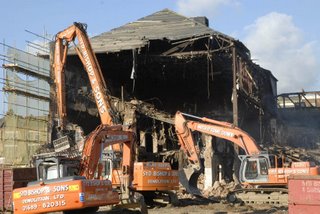
"There is absolutely no doubt, based on my experience, that (these buildings) can be satisfactorily brought back to a situation where they can be reused. My experience suggests that repair will not be excessively expensive."
Brian A Morton MBE C.Eng MICE Dip Conservation(AA) IHBC Structural Engineer to Canterbury and Bury St Edmunds Cathedrals and the Spitalfields Trust
How it could have been - restored as part of a new housing and railway station development.

"[These buildings] represent the heart and soul of Dalston. We believe they represent both the past and the future of Dalston’s prosperity. We want to see them restored so that we can show our grandchildren how Dalston used to be and so they can share our pride in our heritage and identity."
Ridley Road Market Traders Association
How it is today - destroyed by Hackney Council with the approval and agreement of Transport for London, the Greater London Authority and the Secretary of State.
Noun: the natives or inhabitants of ancient Philistia
Adjective: those who pursue only material gain and who place no value on beauty, culture or artistic creations;
Philistinism: the vandalism of our heritage and culture as justified by institutional policy.
How did this happen ? See the posting "The story that was never told".







